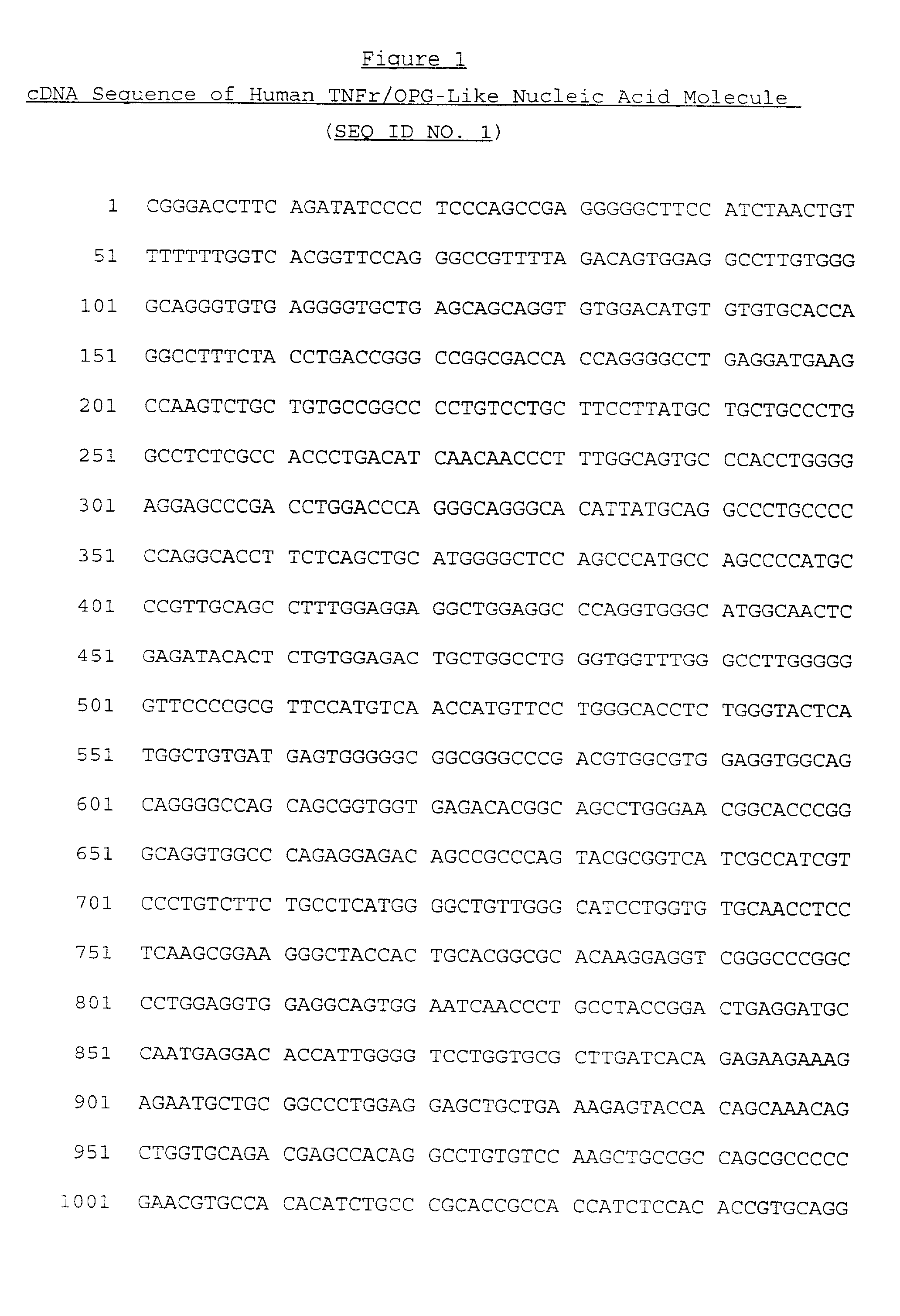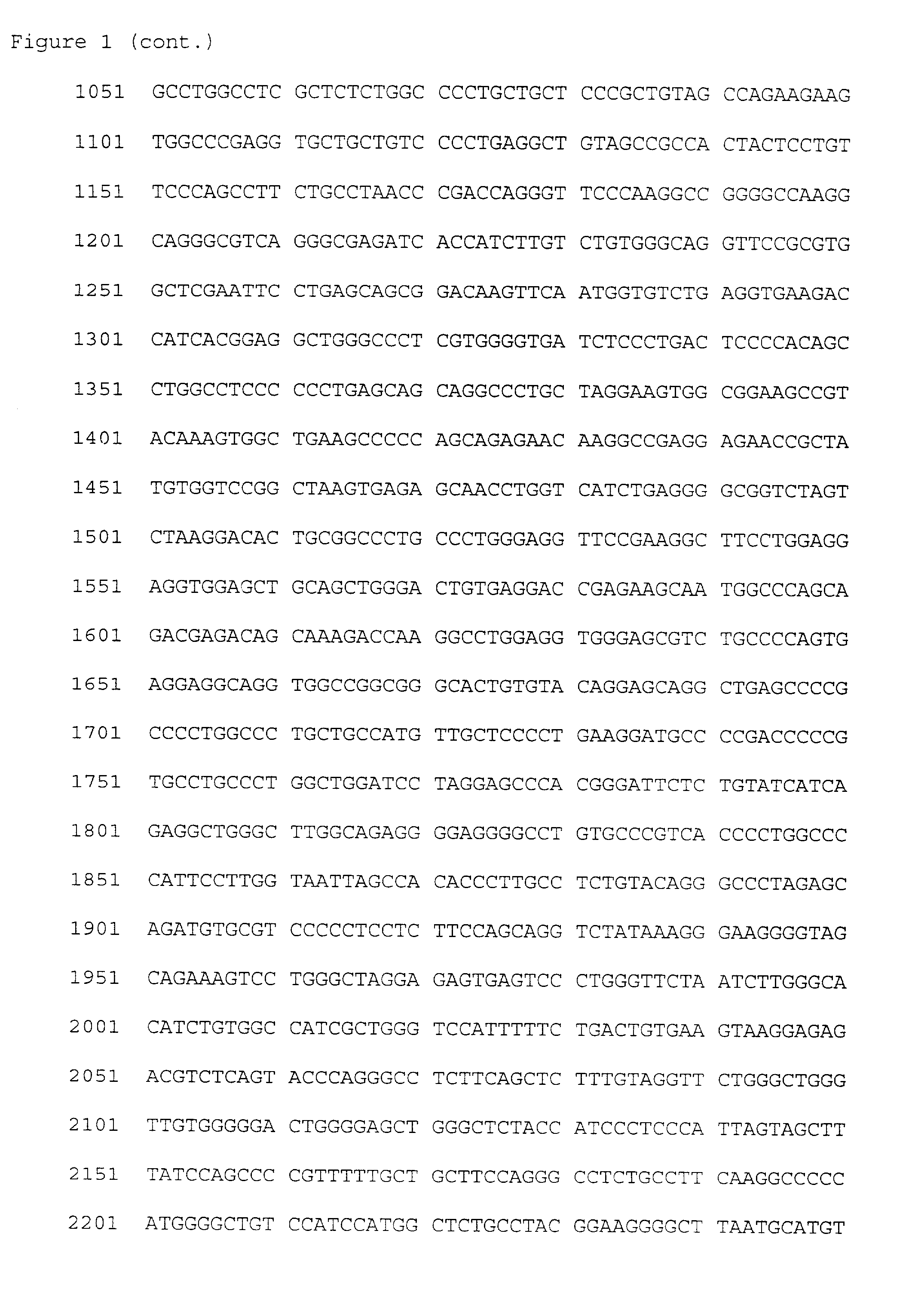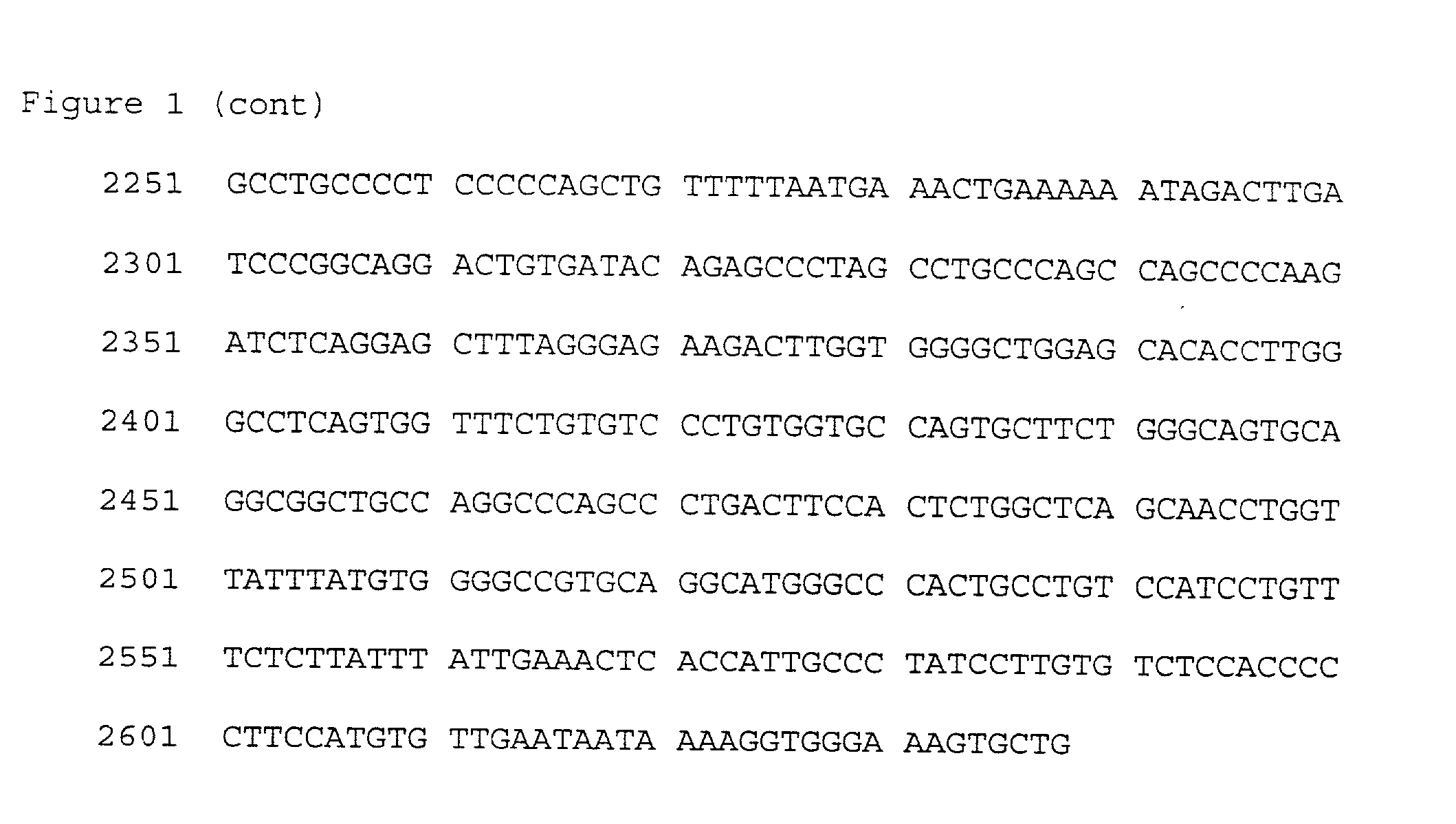TNFr/OPG-like molecules and uses thereof
a technology of tnfr and opg, which is applied in the field of new tnfr/opglike nucleic acid molecules and encoded polypeptides, can solve the problems of unrealized potential for the development of novel therapeutics based on the human genome, and the structural and functional analysis of polypeptide products from many human genes has not been undertaken, so as to achieve adverse effects on the structure of polypeptides
- Summary
- Abstract
- Description
- Claims
- Application Information
AI Technical Summary
Benefits of technology
Problems solved by technology
Method used
Image
Examples
example 2
Evaluation of TNFr / OPG Tissue Expression
[0441] Methods for mRNA expression analysis by RT-PCR were as follows.
[0442] Reverse transcription (RT) reactions. 2 ug of total RNA from each human fetal tissue (total RNAs were purified by Total RNA Isolation Kit from Amersham Pharmacia Biotech Inc., Cat.# 15593-031). The reaction Mixture contained 2 ug total RNA, and 1 ul (1 ug) Random Primer. The volume was adjusted to 12 ul with water, heated to 70.degree. C. for 10 min, and quick-chilled on ice. 4 ul 5.times.First Stand Buffer (BRL), 2 ul 0.1 M DTT (BRL), and 1 ul 10 mM DNTP Mix(BRL) were then added, and the solution was mixed well and warmed to 37.degree. C. for 2 min. 1 ul Superscript II RT (BRL) was added, and the solution was incubated at 37.degree. C. for 1 hr.
[0443] The reaction tube was then placed in ice to terminate the reaction. cDNAs produced in this way were used as the template in the PCR analysis.
[0444] Estimate of Relative Expression Levels
[0445] In order to normalize for ...
example 3
Production of TNFr / OPG-like Polypeptides
[0463] A. Bacterial Expression
[0464] PCR is used to amplify template DNA sequences encoding a polypeptide using primers corresponding to the 5' and 3.degree. ends of the sequence. The amplified DNA products may be modified to contain restriction enzyme sites to allow for insertion into expression vectors. PCR products are gel purified and inserted into expression vectors using standard recombinant DNA methodology. An exemplary vector, such as pAMG21 (ATCC No. 98113) containing the lux promoter and a gene encoding kanamycin resistance is digested with BamHI and NdeI for directional cloning of inserted DNA. The ligated mixture is transformed into an E. coli host strain by electroporation and transformants are selected for kanamycin resistance. Plasmid DNA from selected colonies is isolated and subjected to DNA sequencing to confirm the presence of the insert.
[0465] Transformed host cells are incubated in 2.times.YT medium containing 30 g / ml kana...
example 4
Production of Anti-TNFr / OPG-like Polypeptide Antibodies
[0472] Antibodies to TNFr / OPG-like polypeptides may be obtained by immunization with purified protein or with TNFr / OPG-like peptides produced by biological or chemical synthesis. Suitable procedures for generating antibodies include those described in Hudson and Hay, Practical Immunology, 2nd Edition, Blackwell Scientific Publications (1980).
[0473] In one procedure for the production of antibodies, animals (typically mice or rabbits) are injected with a TNFr / OPG-like antigen (such as a TNFr / OPG-like polypeptide), and those with sufficient serum titer levels as determined by ELISA are selected for hybridoma production. Spleens of immunized animals are collected and prepared as single cell suspensions from which splenocytes are recovered. The splenocytes are fused to mouse myeloma cells (such as Sp2 / 0-Ag14 cells; ATCC no. CRL-1581), allowed to incubate in DMEM with 200 U / ml penicillin, 200 g / ml streptomycin sulfate, and 4 mM gluta...
PUM
| Property | Measurement | Unit |
|---|---|---|
| melting temperature | aaaaa | aaaaa |
| melting temperature | aaaaa | aaaaa |
| melting temperature | aaaaa | aaaaa |
Abstract
Description
Claims
Application Information
 Login to View More
Login to View More - R&D
- Intellectual Property
- Life Sciences
- Materials
- Tech Scout
- Unparalleled Data Quality
- Higher Quality Content
- 60% Fewer Hallucinations
Browse by: Latest US Patents, China's latest patents, Technical Efficacy Thesaurus, Application Domain, Technology Topic, Popular Technical Reports.
© 2025 PatSnap. All rights reserved.Legal|Privacy policy|Modern Slavery Act Transparency Statement|Sitemap|About US| Contact US: help@patsnap.com



